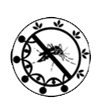History of Dengue in Sri Lanka
Dengue fever and the more severe Dengue Haemorrhagic fever (DHF) became nationally notifiable diseases in Sri Lanka in 1996, and the information before that was based on outbreak reporting. However, clinical dengue-like illness has been recorded in Sri Lanka from early 20th century, and it was serologically confirmed in 1962 (Vitarna et al, 1993).
There has been an island-wide epidemic of dengue with 51 cases of DHF and 15 deaths in the period 1965-1968. Thereafter, from 1969 up to 1988, multiple similar outbreaks with endemic dengue fever was reported in urban areas, but there were only occasional reporting of DHF.
Although Sri Lanka has had history of over 40 years of dengue fever and possibly dengue haemorrhagic fever for almost the same period of time being reported, since the early 1990s progressively large epidemics with more severe and fatal DHF have occurred at regular intervals.
Current Situation of dengue in Sri Lanka
Magnitude of DF and DHF epidemics in Sri Lanka continued to increase during the early 2000s with two of the largest epidemics occurring in 2002 and 2004 with 8931 cases (incidence of 47 per 100,000 population) and 15463 cases (incidence of 77 per 100,000 population) reported to the national Epidemiological Unit during these two years respectively.
Dengue has a seasonal transmission in Sri Lanka, with two peaks occurring with the monsoon rains in June-July and October-December respectively. The majority of cases occur during June-July, the summer monsoon.
At present almost all districts in the country are reporting cases. Colombo, Gampaha and Kalutara districts in the western province have recorded the highest case rate particularly during epidemic year (Quarterly Epidemiological Bulletin).






